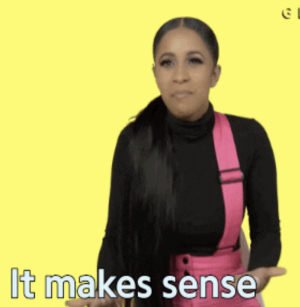Start drafting your paper with a sentence outline
Before starting to write a paper, you need an outline: a table of contents and a basic idea of what will go in each section and subsection.
How do you do this?
More than likely you do what 99% of academics do: you create a document with the basic headings (‘introduction’, ‘literature review’, ‘methods’, ‘results’ and ‘discussion’); and then, you fill in each section with detailed notes of what you want to write.
This is a ‘content outline’ of your paper. In this article, I am proposing something
different to you: a ‘sentence outline’ of your arguments.
I came across the sentence outline when I was a post-doc at Berkeley. Since then it has
become an indispensable tool for my writing, and I recommend and teach it to my students.
Michael O’Hare, a professor of public policy at Berkeley, wrote a great sentence outline
of what a sentence outline is. Have a look at his
memo here.
Why write a sentence outline?
The difference from a content outline is not only in terms of form. A sentence outline forces you to outline ARGUMENTS, not content. See Section III of O’Hare’s memo: he answers a ‘why’ question. He gives a series of reasons and arguments in support of a sentence outline - he is not merely describing content.
I cannot stress how important this is. Mediocre academic articles are descriptive, good articles have arguments.
An article with a never-ending description of results, and then an endless reflection in the ‘discussion’ section, loses the attention of the reader. This is bad, especially if the reader is a reviewer.
You want an article that makes strong and provocative arguments. And a sentence outline forces you to think of your arguments before you start writing.
An article is robust if it develops a line of argument - a skeleton that connects different arguments to one another rather than just providing a list of findings, comments or thoughts. A sentence outline helps you create this structure.
How do you write a sentence outline of your arguments?
Follow O’Hare's advice. Think of your outline as a Russian doll of nested arguments.
Start with a list of the major arguments that you want to make. Each argument is one major section of the paper (I, II, III). Then break up the argument into several sub-arguments that support it or explain it (A, B, C etc). Each sub-argument is a sub-section of the section, or one core point. Then break this into further smaller supporting arguments (1, 2, 3 etc). Each of these arguments corresponds to one paragraph of your final paper.
One common mistake is to treat the sentence outline as an abbreviation of the full sentences that you plan to write in your paper. The sentence outline is not short notes of the full paper. It should be a structure of your arguments written out in full sentences.
I know. It’s difficult. But it pays off.
It is not easy to write a sentence outline. It is much more difficult and time consuming than a content outline.
It takes more time because you do more work. This work will pay off further down the line. You spend more time because you think hard about what is it that you want to argue, not just about what content should go where.
When you are pressed to clarify your argument, you might find that it is still weak. Maybe your thoughts are not clear enough. Maybe your argument is not what you wanted it to be. Maybe the data that you have does not support what you wish to argue.
Don’t get discouraged. It's better to realize this early on. It's far worse to write an entire paper and realize later that you don't have an argument (or to have a colleague or the reviewer point it out to you).
I have taught many of my students the sentence outline approach. Only a few have invested the time and effort to master it; their papers have improved as a result of the effort.
I have also found that when I create a sentence outline for a paper, I write much faster than when I don’t create one. I waste less time trying to clarify my arguments while I write. A sentence outline permits me to start writing in an argumentative, not descriptive form.
Should you always use a sentence outline?
As with everything on this website, there are no golden rules that work for everyone, in all situations, or at all stages of their career. I don’t start all of my papers with a sentence outline. Sometimes I feel I know what I want to argue and I just let the material flow throughout the paper and then I provide the structure.
However, I find sentence outlines extremely useful, especially when I am not confident about what it is that I am going to argue in that paper. I also find them useful, when I want to make a strong case for something.
I ask my students to create sentence outlines because I want to help them craft their arguments early on in the writing process. I have also found the sentence outline to be extremely useful in multi-authored collaborations: it lets you communicate the backbone of the argument with your co-authors, and it helps you spot disagreements early on.
To help you see a developed sentence outline, I am providing an example of one that we created for a paper back in 2008 with my good friends and colleagues Isha Ray and Julian Fulton. The paper was eventually published in the journal Environmental Management.
Now that I think about it, my best papers all started with a sentence outline!
Have you tried writing a sentence outline? Did you find the experience to be easy or hard? What were the most challenging aspects of it? Share your thoughts with us in the comments section.















